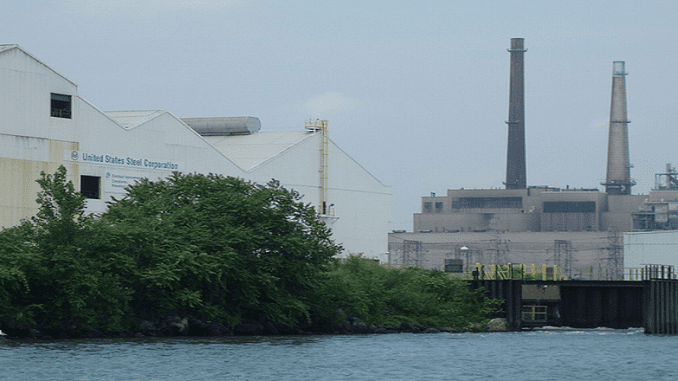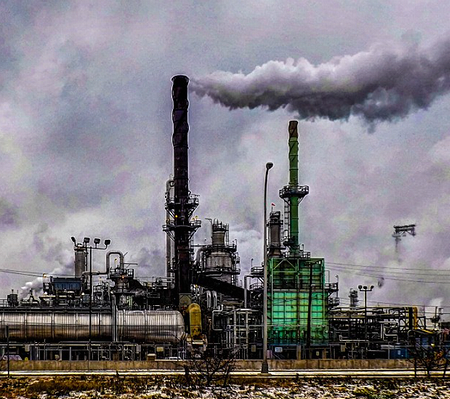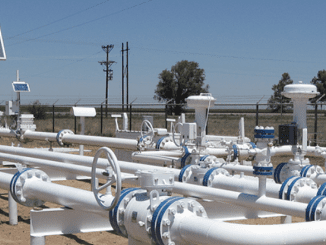
DETROIT, Michigan, February 5, 2022 (ENS) – The U.S. Environmental Protection Agency this week announced a formal determination that the Detroit area did not attain the sulfur dioxide air quality standard by the required deadline. This decision follows a court ruling requiring EPA to determine, under the federal Clean Air Act, whether the area met an air quality standard by the 2018 deadline.
This EPA determination was expected by the state and is a result of a strategic decision made by EPA and the state of Michigan in 2018 to address sulfur dioxide emissions in Wayne County, the location of Detroit, Michigan’s largest city with its 637, 600 residents.
The National Ambient Air Quality Standard for sulfur dioxide (SO2), set in 2010, is 75 parts per billion.
SO2 forms when sulfur-containing fuels such as coal, oil, or diesel are burned. Sulfur dioxide converts in the atmosphere to sulfates, a major part of fine particle pollution across the eastern United States.
And despite the EPA’s nonattainment determination, the Detroit situation is improving. While the city did not meet the standard in 2018, or in 2013 when the area was designated as nonattainment for the standard, the Detroit area has seen a reduction in sulfur dioxide emissions of greater than 70 percent since 2013.
The improvement has come in spite of obstacles put up by polluters and a Michigan state court ruling.
The Michigan Department of Environment, Great Lakes, and Energy, EGLE, has been working with the EPA and the Detroit community to reduce SO2 emissions by area industries. The measured SO2 values in the area continue to show improvement and are currently below 44 parts per billion.
“EPA’s upcoming action, which we are making in close coordination with the state of Michigan, will reduce sulfur dioxide pollution in Detroit,” said EPA Region 5 Administrator Debra Shore. “This means everyone in the area will breathe cleaner, healthier air, which is especially helpful for vulnerable populations and overburdened communities.”
Michigan requested EPA step in after U.S. Steel, a primary source of sulfur dioxide in the area, refused to voluntarily install additional pollutant controls on its facility and in 2017 a state court overturned a state rule designed to require pollution reductions at the U.S. Steel facility.

Since then, EPA and Michigan have partnered to cut emissions from power plants, steel mills, and other industrial facilities in the area to reduce sulfur dioxide air pollution. Air pollution monitors in the area now record SO2 levels that meet the health-based air quality standard for sulfur dioxide.
Even so, the EPA’s determination of nonattainment this week clears the way for the federal agency to propose a Federal Implementation Plan for sulfur dioxide pollution in the Detroit area, an action expected to improve air quality.
Reduced sulfur dioxide in the atmosphere means cleaner, healthier air for the residents of Detroit, especially children, the elderly, and those who suffer from asthma.
EPA expects the proposed Federal Implementation Plan to be publicly available this winter, and the agency promises not to finalize the plan until the public has a chance to comment.
“EGLE greatly appreciates its partnership with EPA. These past few years of coordinated efforts has produced meaningful reductions in SO2 levels in a community that for too long has borne the unnecessary burden of this pollutant,” said EGLE Director Liesl Clark.
“We are pleased that our air quality monitors are showing the positive impacts of this hard work and that citizens can begin to see the benefits of the air quality that they deserve.”
Reduced levels of sulfur dioxide and other sulfur oxides are also beneficial for the environment. A decrease in these compounds means less haze and acid rain, which can harm sensitive ecosystems, and also means an advance for environmental justice that is expected to deliver benefits to underserved and overburdened communities.
Featured image: The U.S. Steel factory on the Detroit River, July 13, 2010 (Photo by NOAA Great Lakes Environmental Research Laboratory / National Oceanic and Atmospheric Administration)
© 2022, Environment News Service. All rights reserved. Content may be quoted only with proper attribution and a direct link to the original article. Full reproduction is prohibited.



